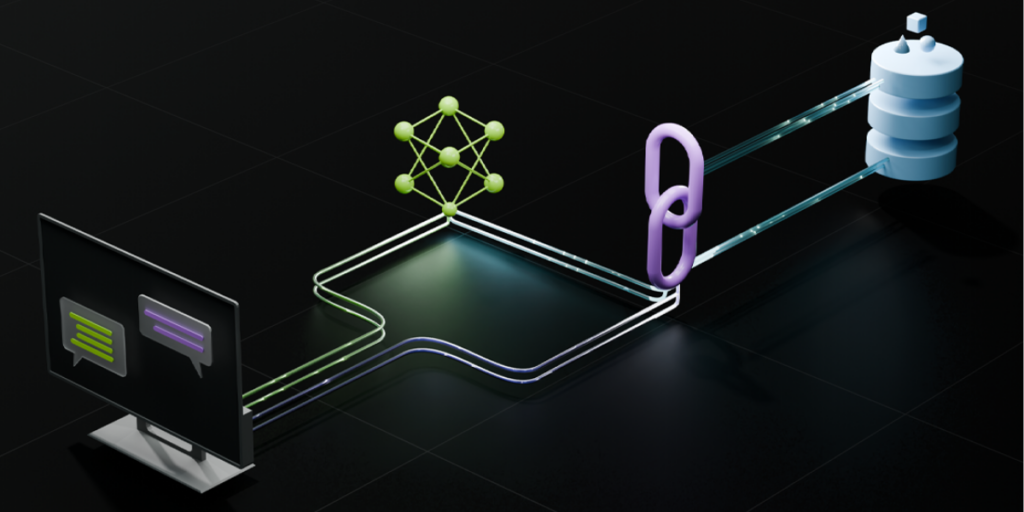In a time in which technology is evolving daily and is constantly evolving, now is the time to celebrate outstanding achievements in the world of technology, in which you allow the machines to perform their own. This means that the job will be much easier for everyone in the coming days as technology will replace your gaps by assisting you in accomplishing your tasks without assistance. Every day, the need for artificial intelligence is rising as more companies look ahead to future advancements enabling them to run their business. However, AI implementation isn’t as simple as you think, as you require the right understanding and expertise to apply it to your advantage in your company.
While some businesses have successfully integrated AI to improve their operations, widespread adoption is still challenging due to specific issues. However, these challenges are expected to diminish with continuous technological advancement. As a business leader, you can look forward to embracing this technology. Here are the key things you must consider before implementing AI in your company.
Why Should Companies Adopt AI?
AI is not just a technological advancement but a strategic change that can propel companies forward with greater speed. It offers tangible benefits such as improved efficiency, data-driven decision-making, and revenue growth. Let’s delve into AI’s strategic advantages.
Increased Efficiency and Productivity
AI technology is crucial in improving productivity and efficiency across all industries. Automating tedious and lengthy tasks, AI lets employees focus on more strategic and innovative initiatives. For example, regarding customer service, AI-powered chatbots and virtual assistants can respond to inquiries 24/7, offering immediate responses and freeing human agents to handle more difficult problems. This is not just a way to cut operational expenses but also guarantees an effortless and efficient customer experience, thereby increasing efficiency overall.
Enhanced Decision-Making
AI’s strength is its capacity to process huge amounts of data quickly and precisely. AI algorithms analyze the data and provide valuable data, which allows companies to make educated decision-making based on data. Predictive analytics, for example, can predict market trends and customer behavior, providing businesses an edge in adapting to market changes. With AI support, decision-makers can improve resource allocation, develop strategies, and navigate difficult waters confidently, leading to more effective decision-making across all areas.
Revenue Growth and Market Expansion
AI is a powerful driver of market expansion. AI algorithms power personalization and adapt product and marketing campaign recommendations to the individual’s preferences. This translates into an increase in sales and a higher level of customer engagement. Furthermore, AI’s capabilities to segment markets and conduct analysis of customer behavior allow companies to find market opportunities that have not been explored, as well as niche segments. With these data, companies can effectively explore new markets and broaden their offerings, increasing revenues and market share.
Improved Customer Experience
AI transforms customer experiences by providing tailored solutions as well as prompt assistance. Personalization is crucial since AI examines customer data to suggest products or services that match the individual’s preferences. Virtual customer service representatives powered by AI can provide 24 hours of assistance, quickly responding to customer questions and solving problems. These improvements improve customer satisfaction and increase customer loyalty since they are impressed by the personal and reliable assistance that AI provides.
Competitive Advantage and Innovation
The first to adopt AI gets a significant advantage over the competition. Utilizing AI to optimize operational processes, predict market trends, and react quickly to customers’ needs can help companies beat competitors. AI’s capability to spot innovative product concepts, speed up the development and research processes, and improve the quality of products by predicting maintenance encourages the development of new products. This constant cycle of improvement does more than keep organizations at the forefront of technology. It also helps them remain agile and creative in an ever-changing business landscape.
How do you Successfully Implement AI in Your Company?
AI Implementation is an ongoing process. Therefore, it is crucial to adjust and refine your strategy to meet your specific business requirements and needs.
Although AI tools may provide substantial benefits, they are restricted by the data they use for training. Humans are still responsible for generating creativity and guiding decision-making during deployment. Here are some steps to be successful in the adoption of AI:
Set out your Goals
Be clear about your company’s goals and objectives regarding implementing AI. These are crucial since they guide your AI project, enable you to decide what’s essential to your company, and aid you in choosing the appropriate AI that meets your needs.
Setting clear goals keeps you on track throughout AI implementation and helps others in the organization understand what you’re trying to accomplish. This will also enable you to gauge progress and effectiveness during the AI implementation process.
Remember that your business goals must be specific, measurable, achievable, realistic, and time-bound. (specific and measurable, achievable, realistic, time-bound). Your goals should not simply define what you’d like to accomplish but also outline the expected outcomes and the necessary time frame. Find the areas or processes in which AI can provide the greatest value. For instance, you might think about finance, marketing, and customer service departments.
Next, identify the outcomes that can be measured for your goals. Do you think AI implementation leads to greater productivity, consistency, efficiency, or an increase in cost savings? Implementing AI in various aspects of your business at one go could result in undesirable outcomes, such as insufficient alignment, inadequate infrastructure, or problems with data quality. Therefore, make sure your goals are realistic and achievable.
Assess Readiness and Resources
Assess your company’s readiness for AI implementation. The first step is ensuring you have the right resources to facilitate AI adoption within your workflow.
Examine the type of data you have and assess if it’s adequate for training purposes. Because the precision of ML models depends on the quality of data, make sure that the data you have is accurate and reliable to avoid problems such as bias or misleading outputs.
Examine your company’s infrastructure capabilities. Do you have the resources to accommodate the AI tools you’d like to develop? Are your services primarily offline or online? And will they work with your AI software? To make it easier for AI deployment, you might need to make some adjustments to your infrastructure, such as buying new equipment.
Artificial intelligence, a complicated and demanding field, requires much technical know-how to tackle its problems effectively. Conduct a competency assessment to determine if you have skilled personnel to handle AI tools.
If your current staff lacks the required skills, it is possible to recruit new employees, as mastering artificial intelligence requires time. Collaboration with independent AI consulting services at A3Logics can assist you in enhancing the efficiency of your AI deployment process.
However, the process of assessing your readiness doesn’t stop there. You must evaluate your company’s environment and decide whether it can accommodate forthcoming changes. Employee resistance can be expected, and you must be ready to address any new issues with efficient change management strategies.
Educate Yourself and Your Team
In order to integrate AI into your workflow effectively, the team and you must be aware of the basics of the technology. It is not necessary for everyone to be an expert in AI, but all employees should be able to navigate the technology and understand how it affects the way they work.
Engage your team members in learning AI concepts, techniques, and tools to develop an understanding of the basics of deep learning and knowledge. It is possible to use online learning tools, including platforms like Coursera, Udemy, and Udacity. Short AI-related training courses may provide you with the basics of AI.
Identify Use Cases
Find specific uses for which AI can bring tangible advantages. If, for instance, you’re a marketing professional, think about how AI can drive revenue, improve customer relations, and improve campaigns. Other examples of market-specific AI applications include the segmentation of customers, the creation of personalized sales forecasting content, and the optimization of social media.
Consider areas where AI could improve efficiency, decision-making capacity, or customer experience. For instance, incorporating automated chatbots or virtual assistants into your workflow could help you give relevant and meaningful feedback quickly and positively shape customer experience. These bots can also relieve employees from repetitive tasks and let them concentrate on more vital tasks.
Other applications of AI include risk assessment and regulatory compliance, automated financial analysis, inventory management, predictive analytics, and more. Be sure to prioritize the use cases according to their impact potential and viability.
If you’re uncertain regarding the potential use cases for AI within your field and would like to schedule an appointment with freelancers on A3Logics who are specialists in AI implementation. They will listen to your needs and worries, assist you in identifying the most appropriate use cases, and recommend the most important AI technologies that will best benefit your business. They will also be able to help you take your project from conception to completion.
Build a Data Strategy
When assessing your readiness to adopt AI, we noted that you should have enough data to train machine learning models to generate the expected outputs. This is where you should dig deep into the data and evaluate the quality. Training AI models with top-quality data will increase the likelihood of generating precise outputs.
Create a data strategy incorporating data collection, validation, storage, and management. AI projects require a large amount of data to train. Therefore, you must decide the best way to collect and clean it up and then save it in the correct format.
Comply with security and privacy regulations. Let your users know what types of data you’re capturing and why protecting their privacy is essential.
Certain companies provide AI instruments that have been mostly pre-trained. This allows you to use the tool quicker, but bespoke AI tools developed based on the company’s data will provide more personalized solutions.
Data processing and collection are both time-consuming and arduous tasks. You should consider working with data scientists from independent companies like A3Logics to assist you in your AI implementation plan.
Choose the Right AI Tools and Technologies
There are a variety of AI tools you can use to improve your workflow. For instance, tools like HubSpot, Influence, ManyChat, and Surfer SEO are specifically for marketing teams. With the many available options, choosing the most suitable AI technology may be overwhelming unless you take a methodical approach.
Begin by looking into various AI tools platforms, frameworks, and platforms built on their integration capabilities, user-friendliness of use, and the ability to scale. Consider the applications of particular AI tools to determine whether they are compatible with your company’s needs and goals.
Verify that the AI software is compatible with the data available within your company. Check if the data is adequate and in the proper format, as the chosen AI tools require.
In addition to the features, it is also important to examine the pricing plans offered by various AI tools and choose only ones that are within your budget.
Finally, you must carefully evaluate the privacy and security features of AI tools. Specific AI technology involves gathering and processing sensitive data. Ensuring that the tools you use have solid security measures will help protect against possible security breaches and maintain your client’s trust.
Develop and Train AI Models
You should consider whether you would like to develop an individual AI model or rely on an existing model available in the mass market. Like most industrial applications, AI tools already on the market are rapidly implemented and usually come with user-friendly interfaces. However, they might contain features that you don’t require and might not be able to address your needs as efficiently as you’d prefer.
However, the process of creating AI designs from scratch can be lengthy and requires expertise and resources. However, you will end up with the most customized, unique tool that is tailored to your exact requirements. A3Logics is a reputable expert AI consulting company that can assist you in determining the best model for your requirements.
After you’ve chosen your favorite models, gather and process the data to train models. Convert the data into the format required, eliminate duplicates and outliers, and add missing values for more consistency and higher quality. Data can be used to build your AI algorithms and models.
Pilot Test and Evaluate
Don’t put your AI models into production immediately. Instead, conduct a set of tests piloted in a controlled space to test their effectiveness. You should create reports to assess the AI models’ effectiveness and collect feedback.
Make any necessary adjustments before full deployment. For an in-depth analysis, you should consult experts to evaluate your AI models’ accuracy and performance. A3Logics will connect you with expert cybersecurity experts who are independent and experienced, as well as software testers, to look for problems and bugs in your AI models.
Deploy and Integrate
Once you have trained and validated your models, you can implement your AI solution in your existing workflows and processes. During this process, you should ensure that your AI system is fully compatible and seamless with other software systems. It is essential to be able to monitor how well your AI models and implement adjustments as needed. Things may break during production. Don’t be afraid when they happen. Prepare your team to handle any unforeseen issues.
Optimize and Improve
Always monitor and analyze the AI software to ensure that it’s operating effectively. Examine relevant metrics to determine the effectiveness and impact of the AI solution. Use the data from these studies to determine areas for improvement and optimization.
Information technology is a fast-changing field; new AI innovations occur almost daily. Being informed is more than simply reading the news headlines of the day. Think about following blogs and signing up for industry newsletters written by top executives. Build a relationship with AI companies you collaborate with to ensure that any new features can be integrated into your system if needed.
Things to Consider Before AI Implementation in Business
Here are some important points worth considering to help decision-makers decide whether to implement AI and tools such as ChatGPT within their company.
Understand the Technology
It’s a seemingly obvious point of departure. However, it’s not always clear which technologies are employed. AI is a commonly used term. However, there are many technologies in play. Machine Learning (ML) is a term used to describe techniques that analyze existing data to find new information. If you work in an organization with many years of data related to staff absences, it might be possible to explore categorical or seasonal patterns. Microsoft’s Azure, For instance, has this type of technology for Office 365 subscribers.
Tools like ChatGPT belong to the generative AI (GAI) category of software, which also includes Dall-E 2.0 and Midjourney image generators. GAI uses the cumulative knowledge from a massive general collection (such as the web) and creates an outcome based on the general trends and probabilities found in the data. GAI can be used in HR settings to gain insights from existing organizational documents. For instance, implicit and unstated processes are uncovered in business documents.
Be Clear About the Problem to be Solved
The differences in the use of ML and GAI illustrate how the choice of technology has to be guided by a specific need. It could be viewed as a method of looking back and gaining knowledge. On the contrary, GAI can be seen as a means of moving forward and generating new materials. This distinction is sufficient to aid in the process of making decisions. However, a mix of GAI and ML could be necessary for tasks such as automated process management. Many tools assist with tasks like automation and connect multiple steps in developing an answer. Established tools like IfThisThenThat, now known as IFTTT and Zapier, allow you to link steps using a non-technical method.
Know the Data Protection Implications
Data protection offers legal protections to your employees and customers. AI tools (as well as automation instruments) can involve data transfer that could significantly impact the organization. Training and policies need to be aware of this issue. Impact assessments could be necessary, and you’ll need to be prepared to deal with requests for subject access and deletion.
AI opens the door to profiling based on data transfer and processing issues. Any effort toward AI implementation requires your team’s data protection from the beginning. If you do not have a team for data protection, this is the time to identify your team’s requirements (and possible talent).
Learn About your Legal Responsibilities
Legal responsibilities extend beyond the protection of data. A key aspect to consider for this technology—specifically generative AI—is the constant present bias. It can be an unintentional consequence of the training datasets employed. Although it’s not always a conscious or insidious distortion, it could reflect the process of looking back and recognizing that the practices or data collection practices that occurred previously did not reflect the ideals we’d like to see continue if they were extended forward.
If you decide to employ software that scans CVs or uses facial recognition, will it be fair to everyone, whatever protected attributes they might have? Companies should ensure that they are aware enough of the proposed system to guide their equality impact assessments and not solely rely on sales or marketing information supplied by the software vendor.
Another crucial legal issue is knowing the legal implications of data ownership, as data is a vital asset for any company. GAI based on images has already come under significant criticism from artists who claim that their work has been used to train new tools. Recent legal rulings made in the US where AI-generated art isn’t patentable and journals’ refusal to recognize ChatGPT for co-authorship all show the treacherous terrain in which these tools work. Recently, numerous law firms and AI Consulting agencies have been hesitant to use GAI because of the risk of harming the privacy of their clients.
Keep a Human in the Loop
The introduction of innovative technology isn’t a complete solution. Technology is most effective in organizations where there is a clear alignment between the processes, and the technology that is being used. The introduction of AI isn’t an end-all-be-all solution for processes. We are the most valuable resource, and it is essential to ensure that while using AI, you are able to adhere to ethical company values.
The process design should prioritize human decision-making and oversight. It is important to remember that these tools are instruments that we utilize rather than substitutes for human interaction and engagement—this is a point that should be at the heart of every HR professional.
Use Cases of AI Implementation in Business
Let’s look at what AI can do to help businesses achieve performance.
Data Analysis and Insights
Utilizing enterprise AI to uncover new patterns and connections in your data, you’ll gain access to previously unobtainable information. You get the most out of your data that isn’t structured while improving the decision-making process.
AI will answer questions about documents and reduce lengthy reports into brief and readable summaries. For a case preparation scenario, for instance, lawyers could utilize AI summarization to identify key arguments, pertinent precedents, and important case information from many legal documents. This type of business AI uses cases not only to speed up the process of reviewing but also to improve the understanding of the information, which allows lawyers to make better-informed decision-making.
Another example of use is in manufacturing environments, where AI algorithms assist in predicting the maintenance requirements of equipment, thus decreasing downtime and improving production schedules. Supply chain companies can also use AI implementation to forecast demand and manage inventory, ensuring efficient and cost-effective operation.
Customer Support and Engagement
Integrating chatbots powered by AI and natural language processing allows for seamless and personal customer interactions. This has improved overall customer satisfaction and engagement.
Your company uses an AI-driven chatbot on your website to help customers locate items, respond to frequently asked questions, and navigate the purchase procedure. The chatbot can analyze user preferences, purchase history, and browsing patterns to provide personalized recommendations. Chatbots will always be available, ensuring customers get quick assistance anytime.
Automation of Repetitive Tasks
A majority of those who responded to the survey conducted by UiPath claim they perform the same task repeatedly and are wasting about four hours per week doing routine tasks that can be automated. Streamlining your operations and improving efficiency by delegating repetitive tasks to AI is possible. This frees the human resources to focus on higher-value and strategic activities. This is how you can accomplish it:
- Automate data entry tasks, decrease manual input requirements, and reduce database mistakes.
- Process, scan, and automatically categorize invoices, speeding up the accounting payable process.
- Review digital workflow patterns and automatically assign tasks to appropriate people or teams according to trigger events like e-signature request requests.
- Use AI-driven email sorting and prioritization tools to simplify the workflow of emails, making sure that essential messages are promptly dealt with
- Automate HR processes like screening resumes, matching candidates, and onboarding.
Content Generation
Utilizing generative AI tools to generate new ideas and create text takes less time and resources than creating material from scratch, thereby increasing efficiency and scaling.
You’re part of the marketing department. Instead of wasting time manually creating content, you can enter relevant details such as the most important product features, the target demographics of the audience, and campaign objectives in the machine learning system. The machine-learning AI tool will then synthesize this information and create highly personalized and logical content pieces like descriptions of the product, emails, and even script concepts for videos for enterprises.
Conclusion
Artificial Intelligence (AI) is a powerful tool for companies of all sizes. It can streamline processes, increase efficiency, and save time and money. Furthermore, AI implementation can provide real-time data on user and customer behavior to help aid in product development.
Companies must take advantage of these advantages to stay profitable over the long term. A myriad of AI applications are accessible, but it is essential to examine each one before deciding on the one that is best for your business. Making sure employees are taught how to utilize the tools efficiently to maximize their use is crucial to the success of any AI implementation.
A3Logics created our AI/ML Center of Excellence to assist customers in making informed decisions regarding and implementing AI to improve the efficiency of the business in terms of continuity and profitability. The most efficient tools and methods are based on our vast experience in helping clients improve their business with AI-powered solutions and developing AI products.








